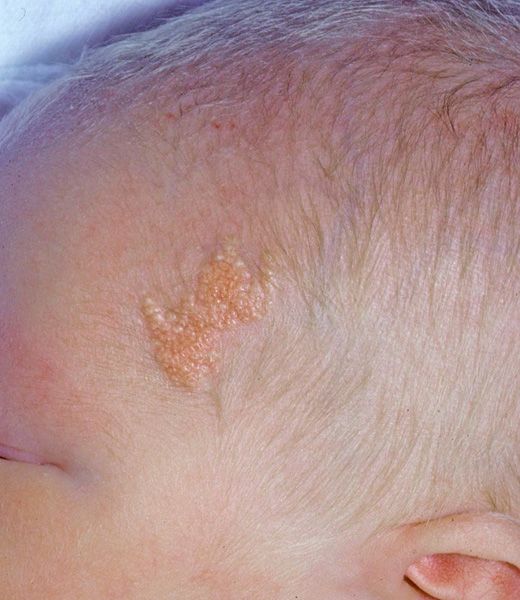Skin Disorders: 2 Shots, 2 Tips
Here: Ted Rosen, MD, presents 2 tips about 2 skin disorders that you might not know.
Case 1

A neonate is noted to have a soft, yellowish-colored plaque on the temple. The pregnancy was uneventful and Apgar scores at delivery were satisfactory.
Key point: This is a classic appearing nevus sebaceous (NS), a congenital hamartoma composed of both ectodermal and mesodermal structures typically affecting the scalp or face. This lesion appears in about 0.3% of all neonates. At puberty and throughout adulthood, the lesion is expected to become increasingly more verrucous.
Treatment: If a NS is excised, it is generally done for cosmetic reasons. Small lesions can be excised with primary closure.
Note: Secondary benign and malignant neoplasms arise within the adult-aged NS in about 15% of cases. These include: syringocystadenoma papilliferum (most commonly), and basal cell carcinoma (2% of NS lesions).
Click here for the next tip
Case 2

An 8-year-old boy presents with multiple, pruritic, annular patches on the face. A steroid cream prescribed for the presumptive diagnosis of eczema did not lead to improvement. Pertinent history includes the presence of both kittens and a puppy in the household.
Key point: While it true that not every round rash is ringworm, the latter should be ruled out when presented with an annular, scaly and itchy eruption. In this case, the skin scraping showing innumerable branching hyphae, confirming the clinical suspicion of tinea.
Treatment: Application of an over-the-counter or prescription azole or allylamine antifungal cream, gel or lotion will cure the relatively well-localized eruption. The pets need to be evaluated by a veterinarian.
Note: Application of a steroid to dermatophytosis may temporarily improve symptoms by decreasing inflammation. However, suppression of local immune responses ultimately leads to worsening of the disease.
Recognize & Refer: Hemangiomas in pediatrics
July 17th 2019Contemporary Pediatrics sits down exclusively with Sheila Fallon Friedlander, MD, a professor dermatology and pediatrics, to discuss the one key condition for which she believes community pediatricians should be especially aware-hemangiomas.